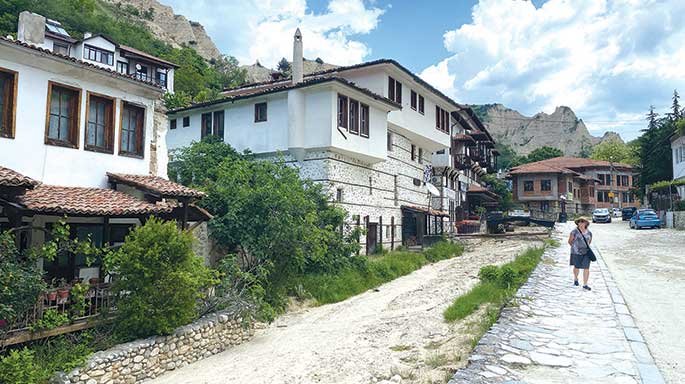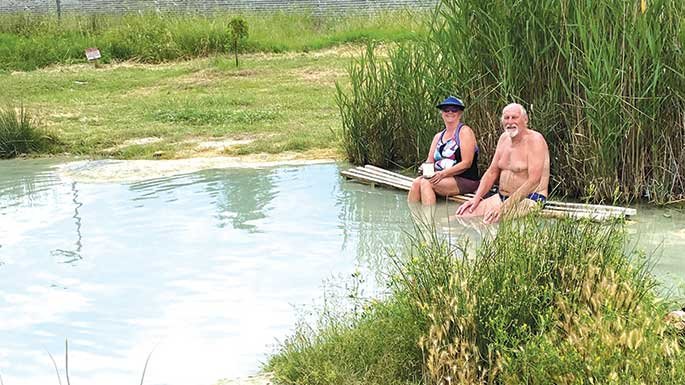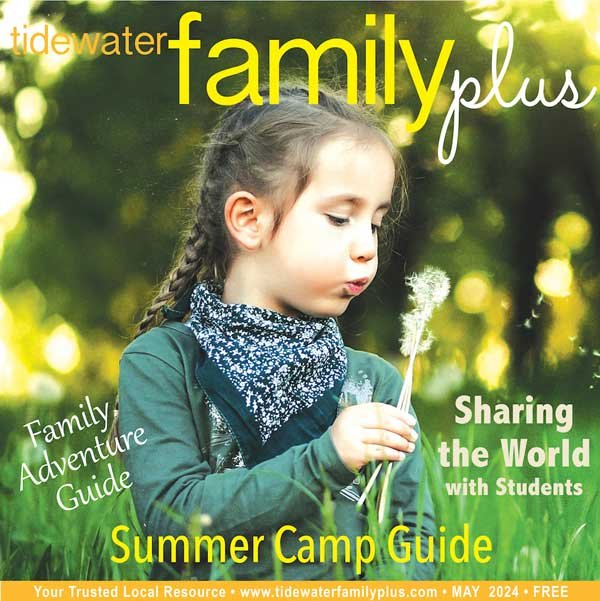Beautiful, Beguiling Bulgaria
/Southwest Bulgaria features cool rock formations, hot springs, ancient monasteries, and amazing wine.
Camping in Europe sounds like a dream, doesn’t it? Traveling wherever the road leads, hiking through beautiful scenery, discovering new cultures and cuisines.
In the 1990s Peter and I had the opportunity to take our three young children camping for six months in Europe. It was an amazing adventure that brought us closer together and opened our eyes to the world around us. When I look back now, that journey seems like a dream. The places we visited—Greece, Italy, Spain, Portugal, and France—blur together into a colorful collage of places, memories, and faded photographs.
Fast forward to 2022 when Peter and I hatched a plan to travel in Europe during the summer while working remotely. “We can do this,” we said and envisioned a slow-paced tour through Europe, revisiting familiar places and discovering new ones. We bought a small camper last year and spent our first summer camping in the Netherlands, Peter’s home. We love his small country, its bike paths, tidy villages, and efficient lifestyle.
This year, however, we were determined to go big or go home. Our target? The Balkan countries in Southeast Europe, a region about the size of Spain tucked between Hungary and Greece. Our journey would take us to new countries, such as Montenegro, Albania, Bulgaria, and Serbia, and to two old favorites, Greece and Croatia. My college friend, Emily, asked if she could join us, and we said “the more, the merrier” and picked her up in Vienna on May 2. First stop? The picturesque country of Croatia with miles of sparkling beaches just waiting for us.
What we didn’t count on was the wet spring weather that plagued us on our journey. Every place we visited, rain poured from the skies. We’d wake up and look at the weather forecast and groan. Wherever we were and wherever we wanted to go, rain was in the forecast. It’s as if a low pressure weather system got stuck above the Balkans and didn’t move for a month.
Camping in the rain isn’t fun. Mud, anyone? Luckily, our camper stayed nice and dry, and Emily’s tent kept most of the rain out. But it’s incredibly frustrating when you are in beautiful places like Croatia with miles of gorgeous beaches and the rain falls like a curtain. The occasional sunny day came and went, but for the most part we traveled faster than we would have liked through Croatia, Montenegro, and Albania, thinking and hoping that Greece would welcome us with sunshine and warmer temps.
No such luck. On our first night there we dined at a seafood restaurant by the beach, and the owner said the weather was killing his business. Rain, rain, and more rain.
Beauty & Ancient Culture
Surrounded by the Pirin Mountains
Emily strolls through the picturesque village of Melnik.
After a few days of spotty sunshine, we headed north to Bulgaria, a country I couldn’t wait to visit. Why Bulgaria? About 10 years ago, Peter and I visited Gdansk, Poland, a pretty city on the North Sea. We stayed in a small family hotel in the country. Being on a budget, we picnicked as often as possible and stopped by a store to pick up groceries and wine. I grabbed a bottle of Mezzek cabernet sauvignon and was surprised to read on the label that it was produced in Bulgaria. At the time, I didn’t know about Bulgaria’s a rich winemaking tradition. The cab was phenomenal—and affordable. After researching further, I decided one day I would visit Bulgaria, in particular the winery that produced Mezzek.
Meanwhile, our son traveled to Bulgaria and raved about how beautiful it is, so I was excited to finally visit. Miracle of miracles, the sun came out as we drove north from Greece across the border, and it stayed sunny almost the whole time we were in Bulgaria. Appropriately, the campground where we stayed was called Sunny Paradise, owned by a couple named Ana and Ivo. It was located in the southwest corner of the country surrounded by rolling hills and gorgeous views of the Pirin Mountain range.
Unfortunately, we didn’t have time to visit the winery where Mezzek wine is produced, which was further east. Fortunately, the region where we found ourselves also had amazing wines and wineries as well as cool rock formations, hot springs, ancient monasteries, and more.
Rich in natural beauty and ancient culture, Bulgaria is indeed worthy of a visit. In 1990, it emerged from the Iron Curtain and elected its first democratic leader and is now a candidate to join the European Union. That said, the country is still very poor. The average salary is approximately $1000 per month, and in rural area, residents make significantly less. As we drove through the countryside, we saw farms and villages that looked stuck in a time warp from 100 years ago. In contrast, modern highways criss-cross the country leading to and from Sofia, its capital.
The southwest corner where we stayed attracts tourists due to its Mediterranean-like climate as well as watersports, hiking, mountain biking, and mineral springs ranging between 107° and 177°F—that’s almost boiling! The largest city is Sandanski, and Peter, Emily, and I headed there one day to pick up groceries and grab a bite to eat. Unfortunately, a stray shower appeared, and we barely made it into a local restaurant before a downpour began that lasted throughout our whole meal, flooding the streets.
Not to worry, we were well taken care of in this family restaurant whose name I can’t translate because Bulgaria’s language uses Cyrillic letters (similar to Russian). The menu was indecipherable, but luckily one of the owners spoke English and gave us a rundown on what was available. The food was amazing—home-cooked, authentic, and incredibly cheap. After our soup course, I dined on fried fish with cabbage salad, Emily had meatballs and fries, and Peter tried a cheese and egg dish. Including bread and a half liter of wine, the bill was only $24.
In the supermarket, we also found very low prices, and to my delight, I found Mezzek wine and bought a few bottles. It was every bit as tasty as I remembered it. On our way home we stopped at a tasting room for a winery near our campground called Rupel Winery. Their beautiful chateau surrounded by vineyards is only for special events, so we tasted wines in their roadside shop. Emily and I agreed they were phenomenal.
Villa Melnik Offers Tours & Tastings
Don’t Miss the Hot Springs in Rupite!
The thermal springs at Rupite are sourced from underneath an inactive volcano. Be careful—the water is hot!
The next day we did some sightseeing. Spread throughout an area over 50 square kilometers are the Melnik Pyramids, made of sandstone and sculpted by nature to resemble giant mushrooms, haystacks, obelisks, cathedrals, and of course pyramids. The locals call them “hoodoos,” and the formations do look a little spooky and ominous.
A good place to view them is en route to the small village of Melnik, known as Bulgaria’s smallest city. Bisected by a dry river bed, the sleepy village is a magnet for tourists seeking local handicrafts or a relaxing café to sit and enjoy the view.
Beyond Melnik is Rohzen, the largest monastery in the Pirin Mountains and one of the most well-preserved. Dating to medieval times, it’s known for its incredible frescoes and historic icons. We loved the serene atmosphere of the monastery, its rustic architecture, and the feeling of peace it evoked. One brochure noted, “A walk around the site will give you a one-of-a-kind experience that blends religion, nature, culture, and history.”
On our way home we stopped by another winery called Villa Melnik, a small, family-owned operation, and took a tour with the owner, Nikola Zikatanov. First, we climbed a hill and he showed us a lovely view of his tidy rows of grapes growing on hillsides undulating in every direction. Then we toured the winery, and Nikola showed us how he uses gravity to move the grapes and grape juice through the fermentation tanks and then, as needed, into barrels.
Underground we saw where the wine aged in oak barrels before returning to the cheerful, bright tasting room, where as expected, Emily and I found Villa Melnik’s wines to be topnotch. We loved the Aplauz label, especially a full-bodied red called Melnik 55, made from an ancient local varietal and aged 15 months in new Bulgarian oak barrels. Nikola was a gracious host, and we wish we could have shipped cases of his wonderful wine back to the U.S. to share with friends. It’s that good!
Our last adventure in Southwest Bulgaria was a visit to the natural hot springs in nearby Rupite, where an inactive volcano dominates the scenery. As we drove up, we saw steaming pools of green-tinted water and people relaxing in the mud. No fancy spa here, just hot water bubbling up from underground. Pools closer to the source are hottest, so we opted to wallow in a shallow pool at the edge of the property and had it mostly to ourselves. Peter, Emily, and I had fun painting each other with the therapeutic mud and enjoying the warm water despite the rotten-egg smell from the sulfur-rich springs.
As we said goodbye to Ana and Ivo the next day, I made a promise that one day, I’d return to beguiling Bulgaria and take my time discovering more of its charms.
For more information, please visit www.bulgariatravel.com.
Editor’s Note: Peter and Peggy are camping in Europe currently and invite you to follow their adventures on Tidewater Family Plus’ Facebook page. Ciao for now!














